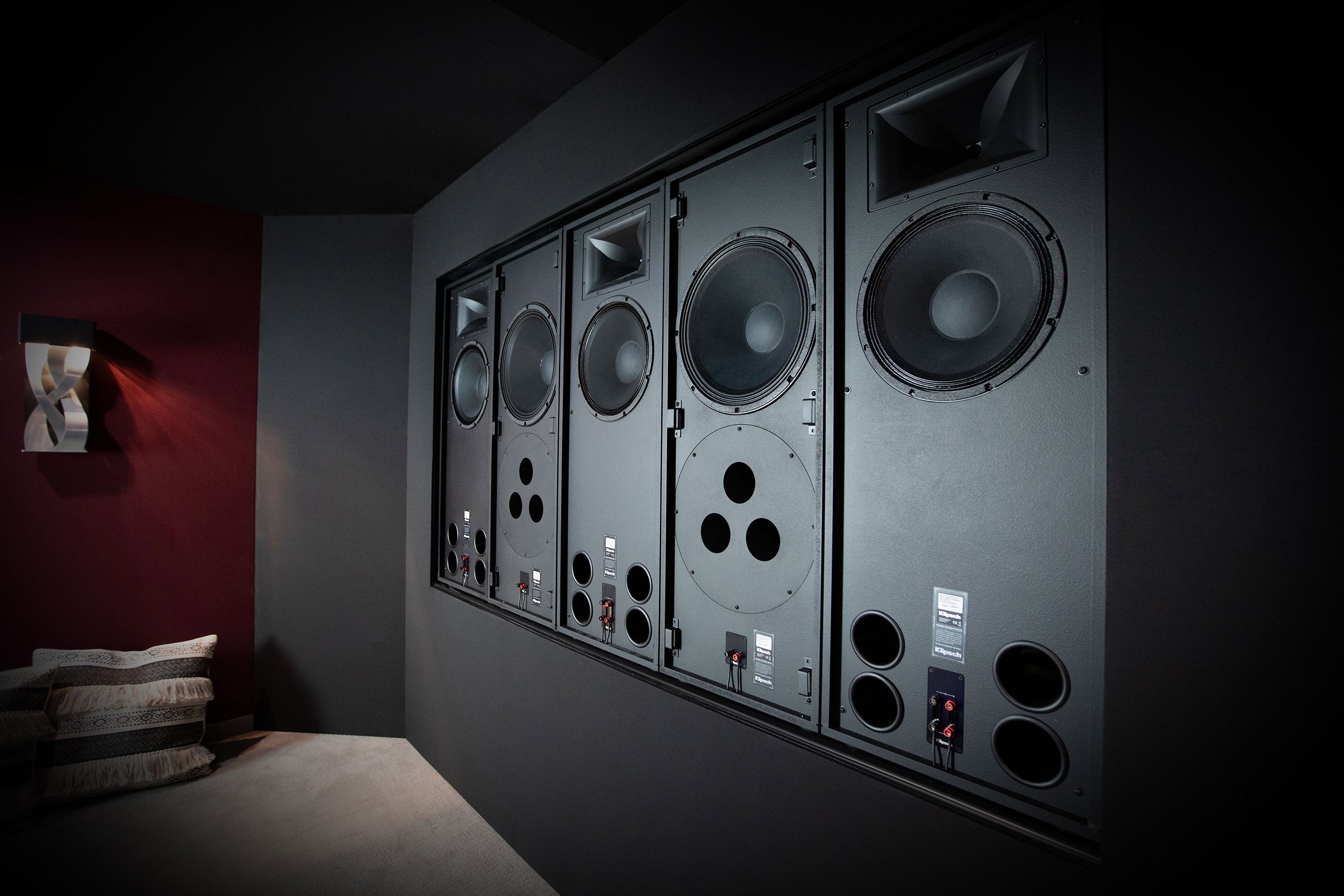The boxes have arrived, are sitting in your living room or basement, and are just waiting for you to put the puzzle of your new sonic soundstage together. You might be wondering where to start. We’re here to help guide you on the path to amazing home audio.
HOW TO SETUP YOUR SPEAKERS
Now, that you’ve taken the speakers out of their respective boxes, it’s time to set them up and rock out as loud as you feel appropriate or as loud as your neighbors can stand. You do you.
Klipsch Coordinator of Technical Information Chad Charleston says most people consider a home theater system to be a 5.1 system, meaning two front speakers (left and right), a center channel, left and right speakers to create a surround sound experience, and a subwoofer to handle the low frequencies.
“For smaller budgets, there are economically-priced 5.1 receivers, which could be paired with reasonably-priced bookshelf speakers for front and surround placement, a dedicated center channel speaker, and a subwoofer,” Charleston says. “Once you’ve selected your components, the right setup will enhance your viewing experience.
If you’ve not set up a home theater audio system before, here are some tips:
-
Place the center channel speaker immediately above or below the screen, directly facing the listening area. If the speaker is being set on a shelf or stand, be sure that the leading edge of the speaker is flush with the edge of the stand, to maintain dialogue clarity.
-
The left and right front speakers should be placed at an equal distance from the screen and at least six feet apart; these should form an equilateral triangle with the primary viewing/listening position. To further enhance the experience, some toe-in might be desirable. If so, be sure to identically angle each speaker and maintain an equal distance from the viewing position.
-
Left and right surround speakers should also be about three feet above (and slightly behind) the seated listeners’ heads.
-
The three most common subwoofer locations include corners, placement along a wall, away from the corner, or beside a front speaker (which can create a better blend with the front speaker, at the cost of possibly sacrificing overall volume). Experimentation with subwoofer placement is highly encouraged; slight adjustments can create big differences in bass reproduction.
-
For a 7.1 system, just add two rear speakers on the back wall located an equal distance from the two side surrounds and at the same height.
Check Out Our Top 3 Picks for the Best Places for a Sub
HOW DO I ARRANGE MY SPEAKERS FOR THE BEST SOUND?
Charleston says the left and right speakers must be placed symmetrically to one another. The two speakers should be, at minimum, as far apart as the distance from each one to the listener; typically six feet or more.
“Think of yourself and your left and right speakers as points of an equilateral triangle,” he explains. As you start to play around with your sound stage, this triangulation gives you the best baseline. Keep the path from speakers to listener unobstructed and, for the best high-end response, the tweeters should be at ear height and aimed at the primary listening position.
“Bare walls and uncarpeted floors, particularly in a room that is virtually square, can cause excessive echo,” he says. “This echo, also known as ‘reflection,’ can severely limit the amount of bass response your system provides. Absorptive materials, such as carpeting, area rugs, wall hangings, etc. can reduce reflected sound dramatically (which then, in turn, will also improve bass response). If the speaker is bass ported, the positioning is more critical. Rear-ported speakers should be placed somewhat away from walls.
“As with any type of experiment, you’ll need to keep track of the changes you make as you move your speakers; note what you like or dislike before you move on to the next speaker position,” Charleston says. “Make your changes in small increments, so that you have a consistent baseline from which to assess the differences in sound.”











